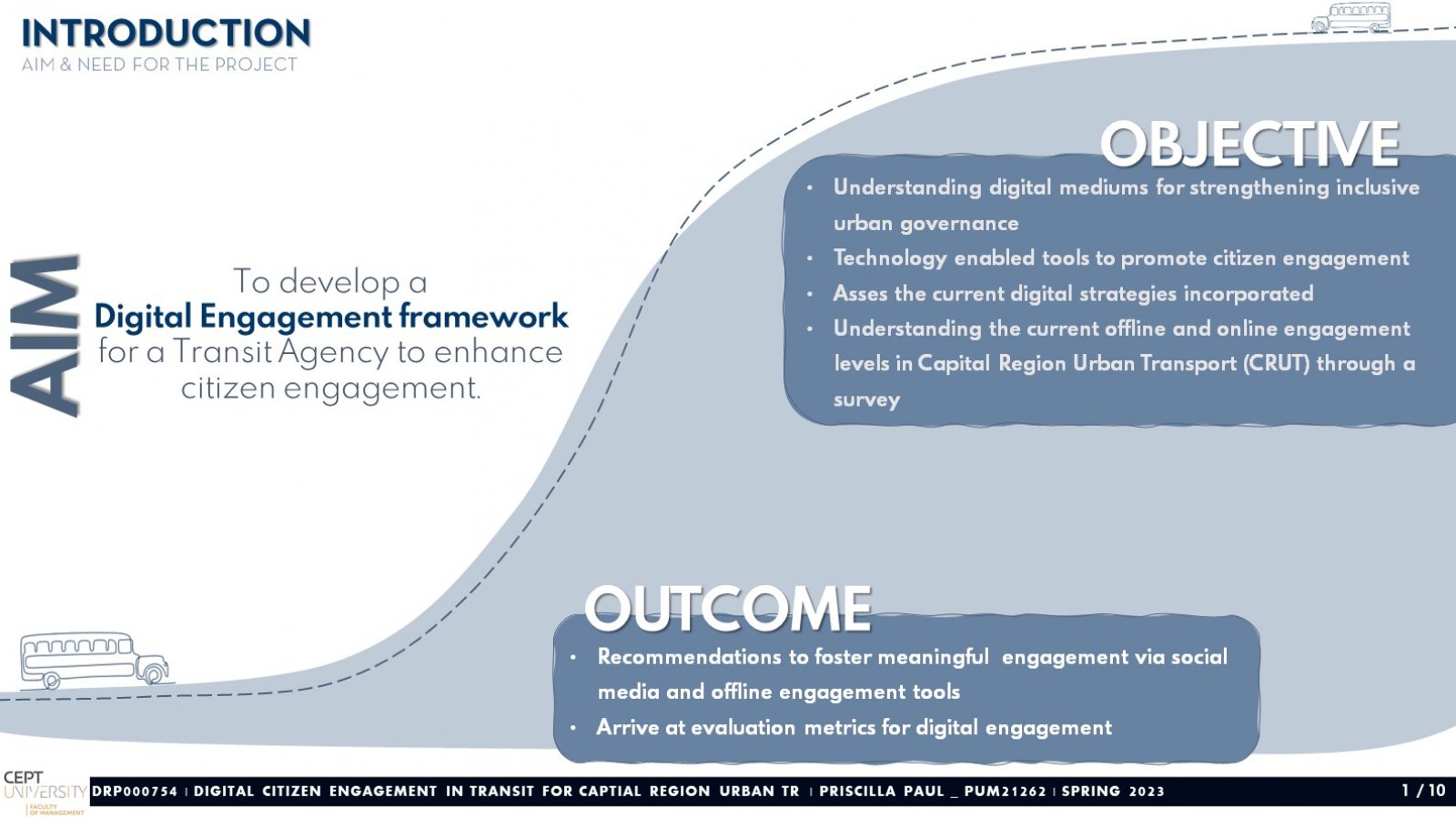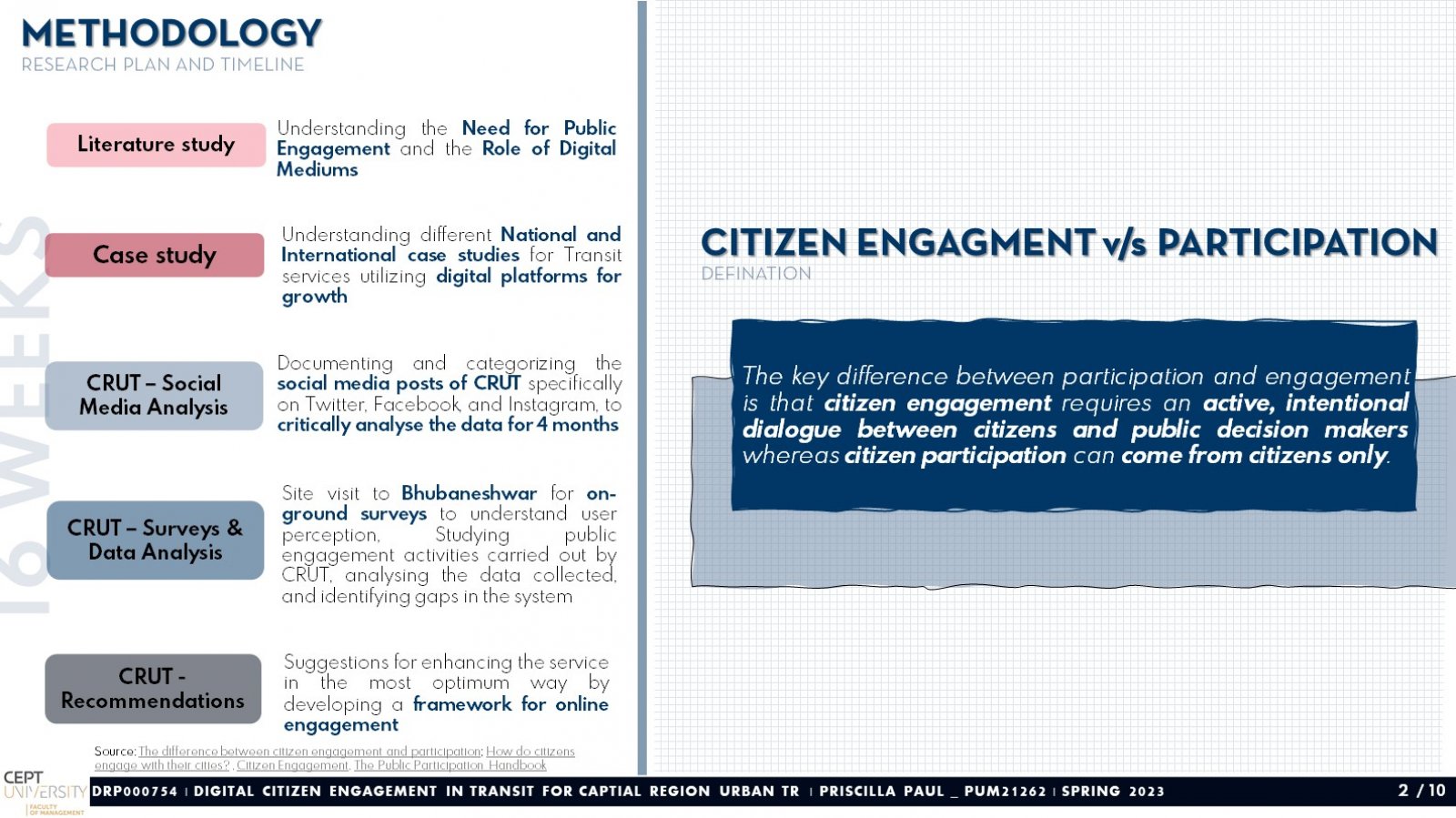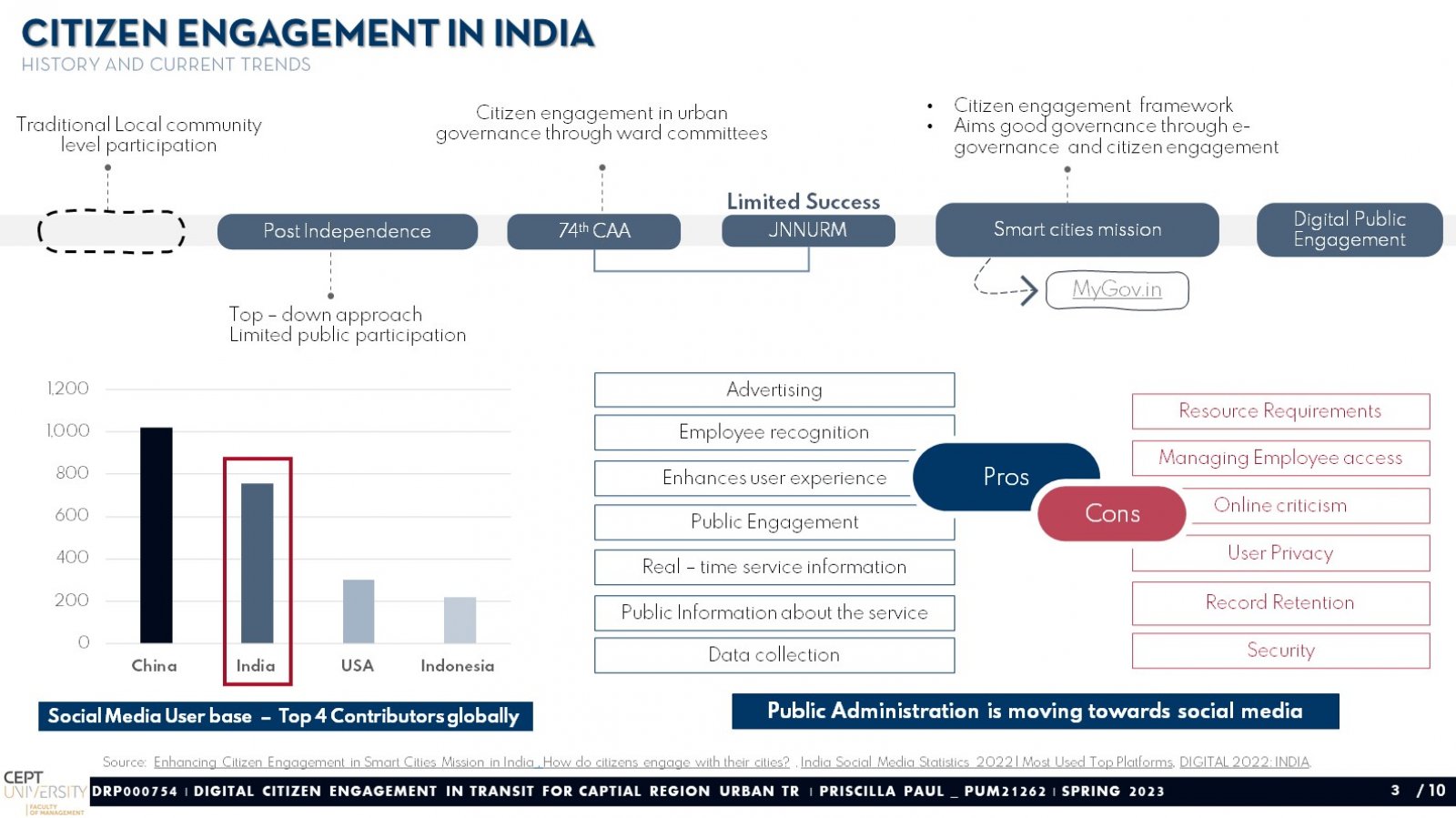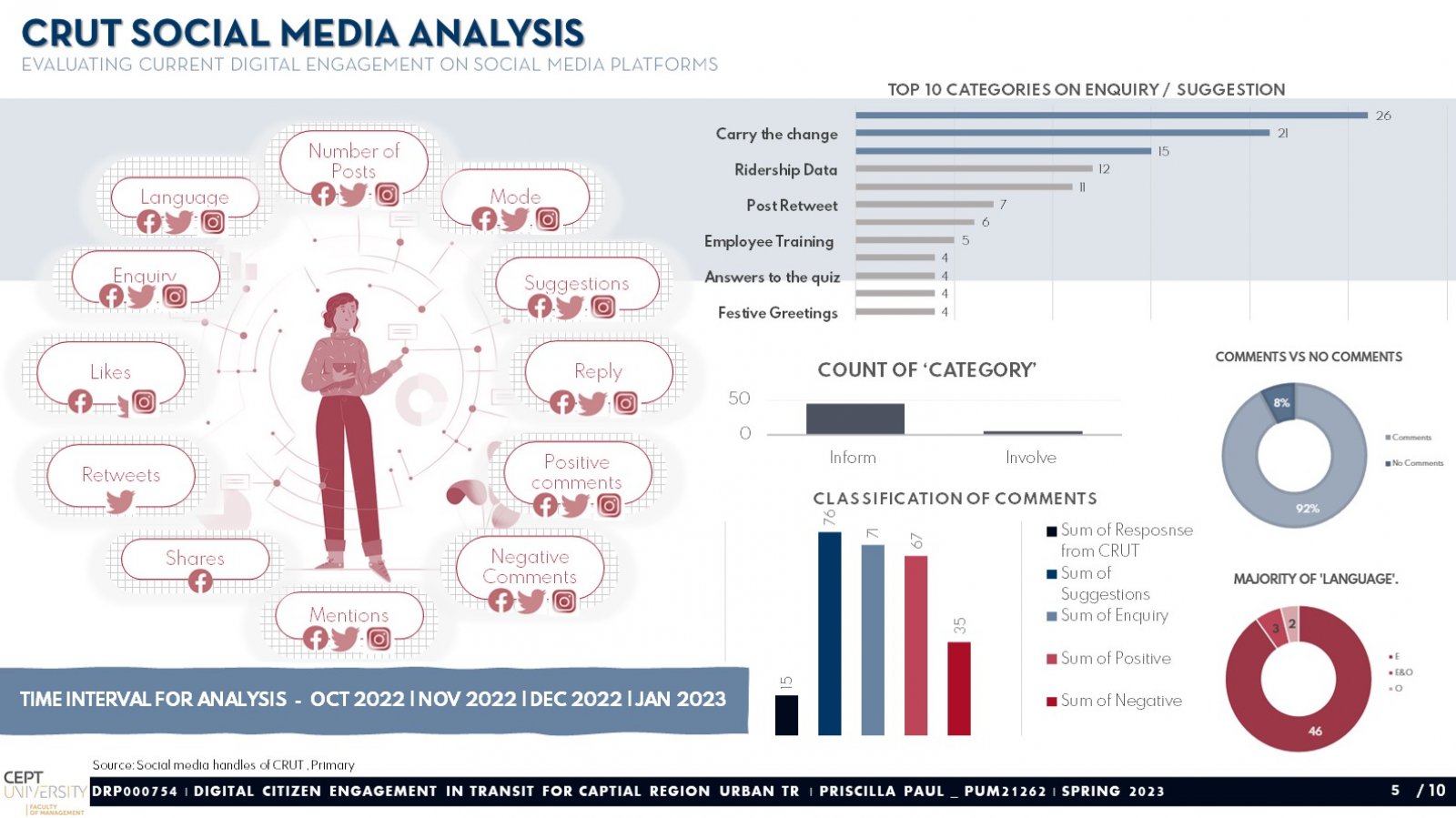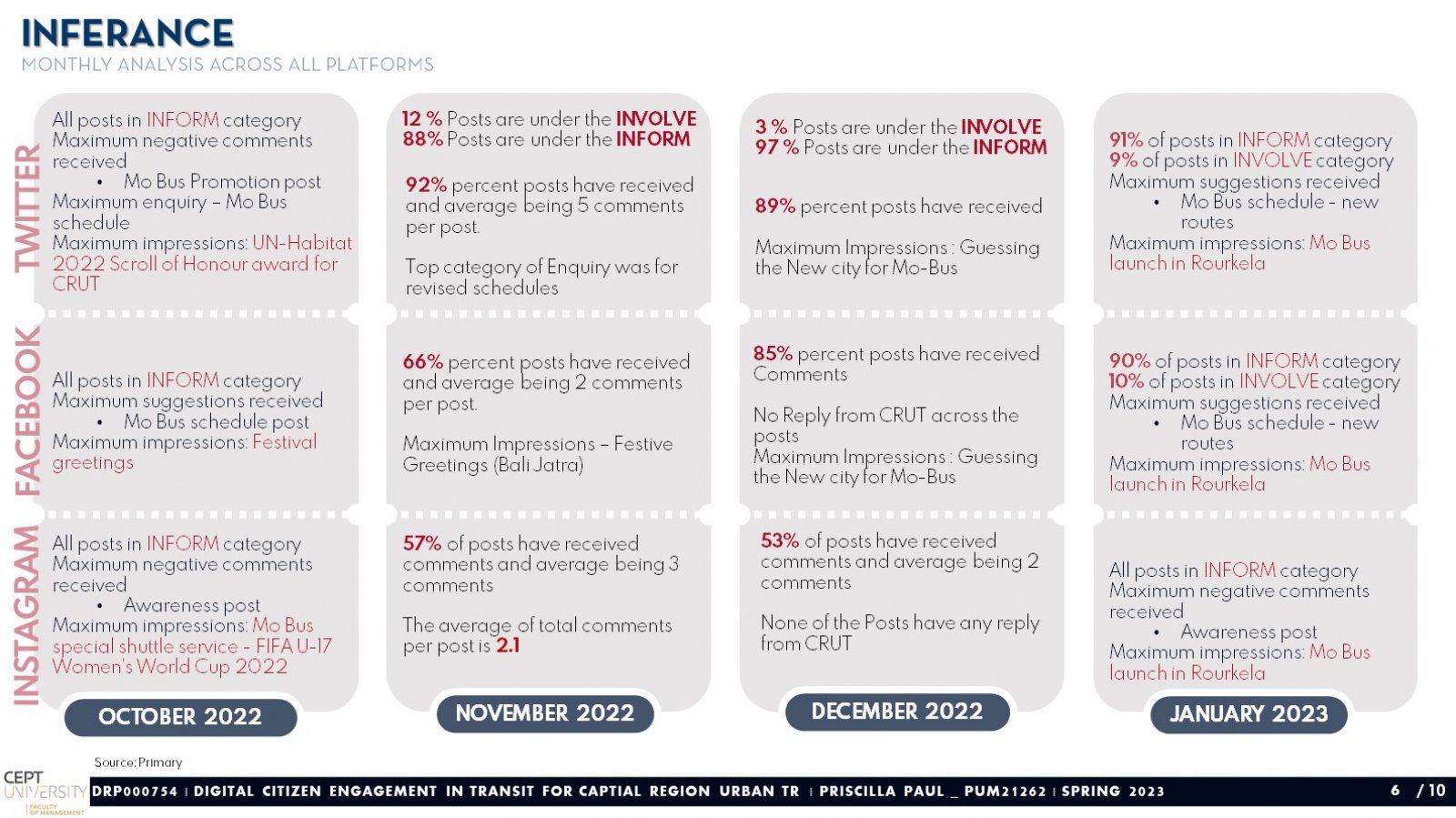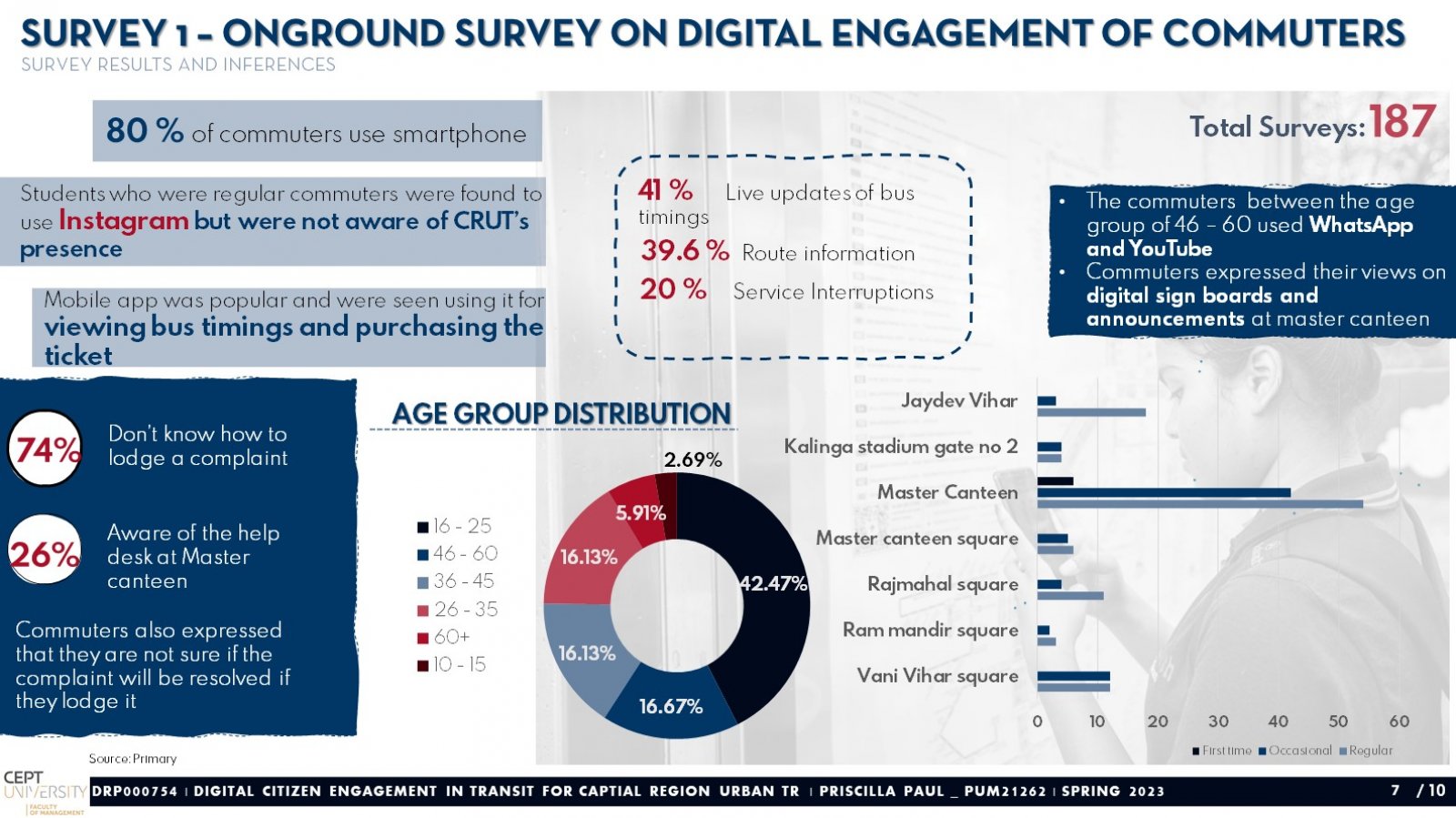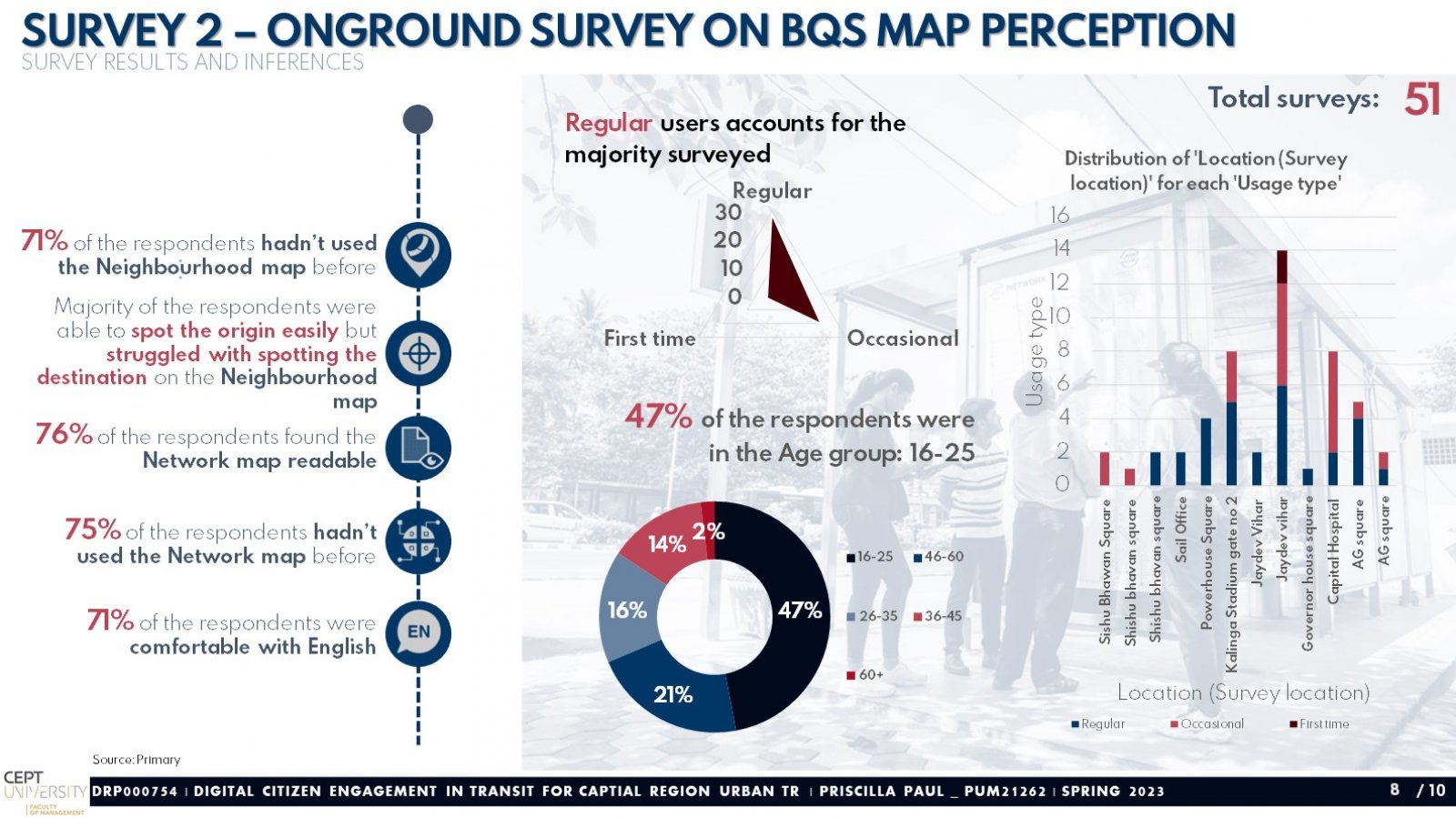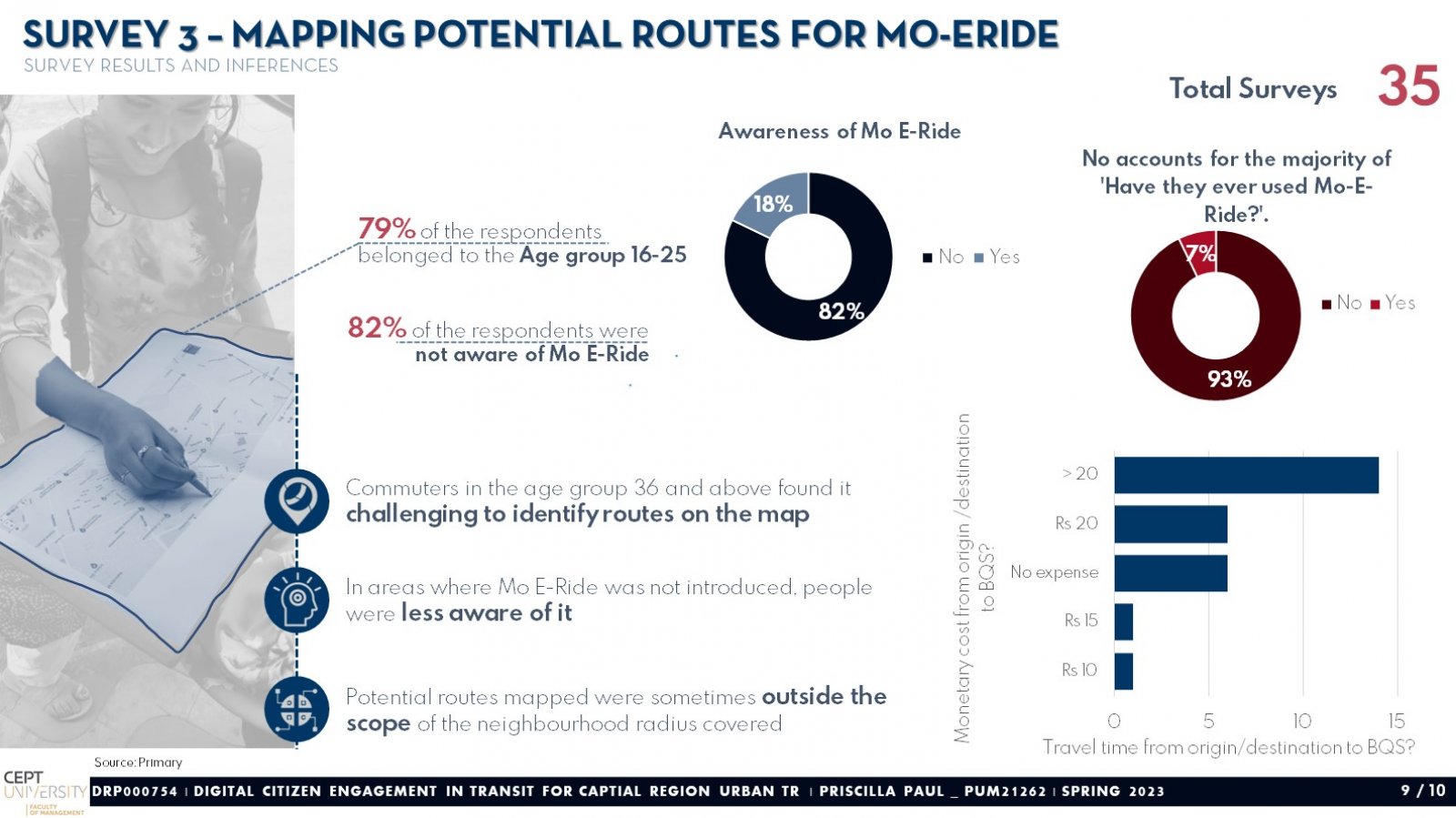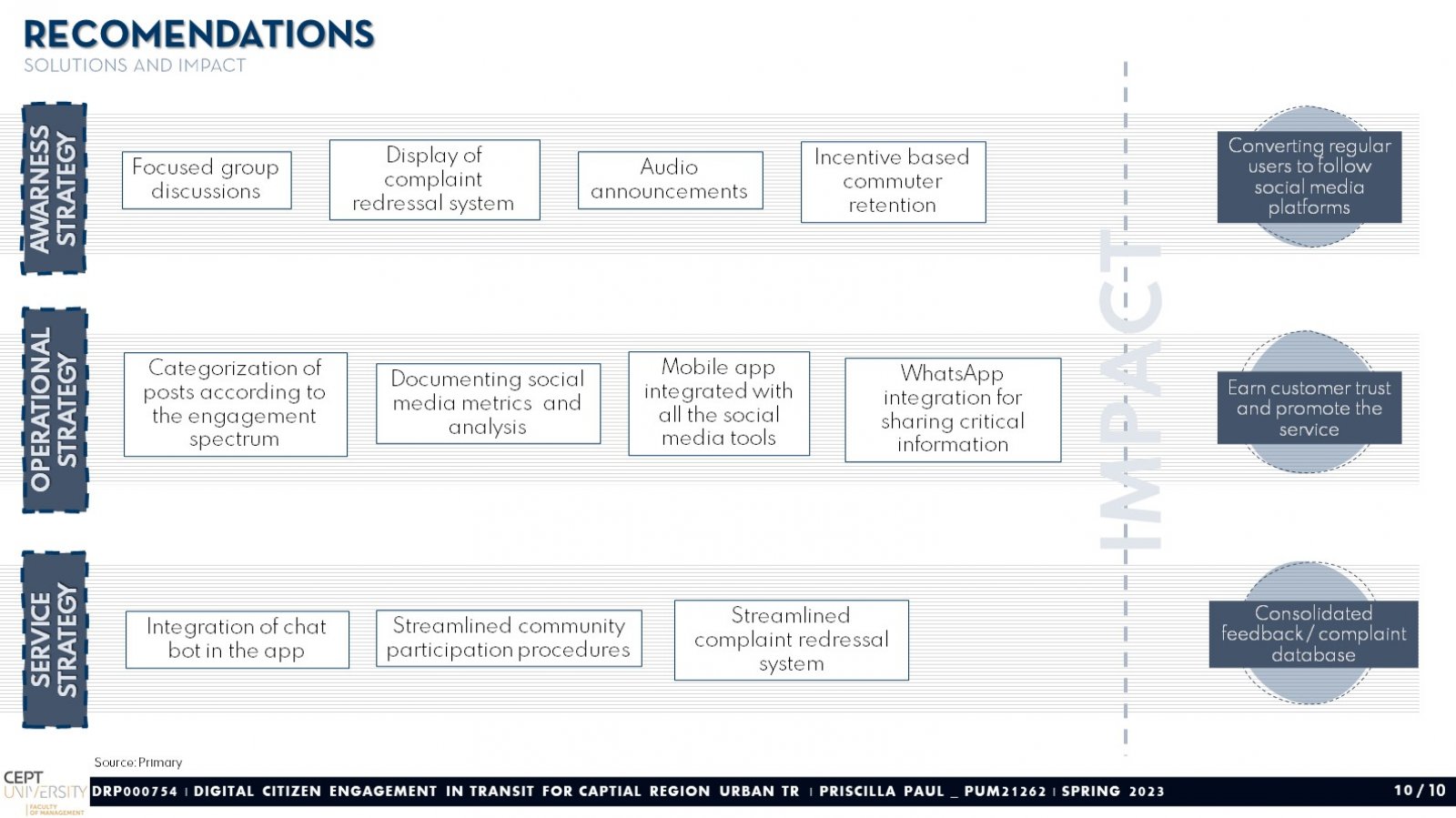Your browser is out-of-date!
For a richer surfing experience on our website, please update your browser. Update my browser now!
For a richer surfing experience on our website, please update your browser. Update my browser now!
Making cities more democratic and inclusive has been a deliberate focus since India launched its Smart Cities Mission and Digital India Programme. The use of more innovative techniques, like social media posts, has been investigated by urban scholars and practitioners as an effective and progressive way to increase their ability to involve citizens in the management and planning of urban areas. However, there is still a “grey area" surrounding the use of digital engagement tools to increase involvement that necessitates more study. This project evaluates online and offline citizen engagement tools and approaches for urban management and planning practices. It fundamentally focuses on the engagement strategies employed by the Capital Region Urban Transport (CRUT), the Government Special Purpose Vehicle that handles the public transit in the Smart city of Bhubaneswar in the state of Odisha in India, which includes 'Mo Bus' - the city bus service and 'Mo E-Ride' - the e-rickshaw service. This research probes the digital access touchstone, user perception, and information penetration levels in the Tier II city of Odisha. The indagation evaluates the existing citizen interaction platforms - both conventional and digital, and technology interventions established for citizen engagement and youth participation involving digital technologies. Additionally, it examines the region's demographics, economy, education, and literacy. It also juxtaposes digital and traditional engagement platforms and the penetration level globally and in India. The posts on the social media handles of CRUT on multiple platforms have been critically analyzed through an engagement lens. Pilot on-ground surveys were conducted in the case city of Bhubaneswar to assess the transport's current engagement and penetration levels. The discrete sets of surveys and focus group discussions included the evaluation of the user perception of the Mo Bus navigation maps displayed at the Bus Queue Shelters (BQSs), the digital citizen engagement levels, and the potential route mapping of Mo E-Ride with the public through involvement activities on a sample size of 51, 187 and 35 respectively. The insights from assessing disparate existing engagement tools led to fostering a strategy that could help increase the levels of involvement and ameliorate the regime. The recommendations encompass platforms and practices that best correlate with sociocultural and political contexts to induce public engagement for effective governance that is inclusive, efficient, and beneficial for the regular commuters of the system.
